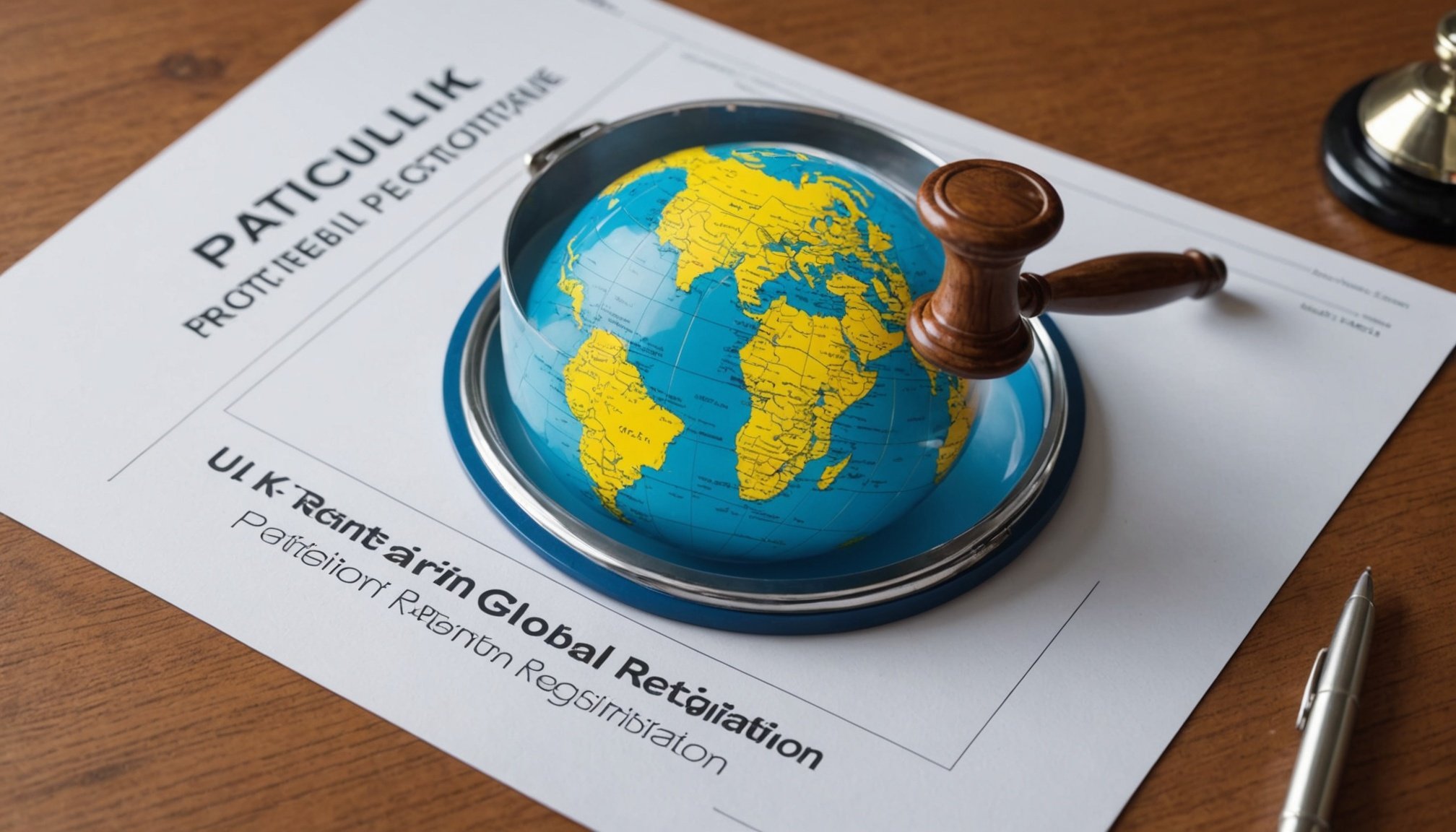Understanding Patent Law
Navigating patent law can be intricate, especially when dealing with UK patent regulations and international patent treaties. For UK enterprises, grasping the principles of patent law is crucial. This knowledge not only aids in securing patent protection but also in informing broader business strategies.
International patent treaties such as the Patent Cooperation Treaty (PCT) and the European Patent Office (EPO) play vital roles. These treaties streamline the patent application process across multiple jurisdictions, reducing redundancy while offering a unified route to obtain protection in various countries. Understanding these frameworks can result in a more efficient patent application process.
Also to see : UK Business Guide: Crucial Legal Tips for Protecting Your Intellectual Property Rights
Moreover, international patent treaties impact global business strategies significantly. Companies must align their patent filings with both national regulations and international norms to protect intellectual property effectively. Failure to comply with these regulations can lead to legal disputes and financial losses.
Ultimately, having a comprehensive understanding of patent law equips businesses to build robust patent portfolios, safeguarding innovative ideas and technologies. This protection not only fosters market competitiveness but also positions businesses advantageously within a global landscape.
Also to see : UK Business Compliance: Key Legal Steps for Robust Whistleblower Protection
Step-by-Step Process for International Patent Registration
Securing a patent in the UK begins with a clear understanding of the initial steps, which often involves a thorough examination of the invention’s novelty and industrial applicability. Once the UK application is in place, expanding the patent’s reach internationally becomes the next challenge.
The Patent Cooperation Treaty (PCT) provides a streamlined approach to filing patents across multiple countries. A PCT application does not grant an international patent per se but sets the stage for pursuing patents in over 150 jurisdictions, simplifying the patent filing process by delaying national phase entries, thus offering time to strategize.
Understanding differences between national and regional patent applications is key. National applications are submitted in individual countries and governed by local laws and regulations, whereas regional applications, like those made via the European Patent Office (EPO), cover multiple countries unified by regional arrangements.
To maximize international patent protection, aligning with PCT strategies and consulting with local patent professionals upon entering national phases is advisable. This collaborative approach aids in navigating the complexities of international patent applications, ensuring robust protection worldwide.
Navigating Jurisdictions
Understanding the jurisdictional complexities in patent law is essential for global business success. Different regional patent offices have distinct procedures and regulations which can impact your international patent strategy. Adapting to these complexities requires careful planning and strategic alignment.
Key International Jurisdictions
UK businesses must consider vital jurisdictions such as the United States, China, and the European Union. Each offers unique challenges and opportunities for intellectual property protection. For instance, the US prioritises a “first-to-file” system, while China has stringent disclosure requirements. Understanding these nuances helps in crafting a robust strategy.
Best Practices for Navigating Jurisdictions
Adapting your approach effectively requires understanding specific jurisdictional requirements. Some tips include:
- Tailoring patent applications to meet the strictest jurisdictional criteria.
- Maintaining flexibility in strategies to accommodate regional variances.
- Regularly updating IP strategies to reflect changing foreign laws and conventions.
Utilizing Local Patent Attorneys
Consulting local patent attorneys can be invaluable. Their expertise aids in navigating the nuances of local patent law and ensures compliance with ever-evolving regulations. They provide crucial insights, mitigate risks, and improve the chances of a successful patent application. Engaging experts locally is a practical investment for safeguarding innovations.
Potential Challenges in Global Patent Registration
Patent registration challenges can be daunting for UK businesses venturing into international markets. Understanding these legal hurdles is essential to avoid common pitfalls. Businesses often encounter issues related to jurisdictional differences in patent law, which can complicate the registration process. For example, the varied patent filing requirements and enforcement regulations across different regions can lead to unexpected delays and complications.
Another prevalent challenge involves the language barrier, where accurate translation plays a crucial role in filing patents abroad. Incorrect translations can lead to misinterpretations in the applications, potentially affecting the outcome detrimentally. Companies must ensure that terminologies and technical specifications are accurately conveyed.
Moreover, UK enterprises should be wary of prior art constraints, which may lead to patent applications being invalidated due to existing similar inventions. Conducting thorough patented technology searches before application can mitigate this risk.
Businesses can proactively manage these challenges by engaging with experienced patent attorneys who understand local regulations. Collaborating with experts can provide clarity and strategic guidance, thereby improving the chances of successful patent registrations and ensuring the protection of innovations globally.
Implications for UK Businesses
Building a strong patent portfolio is pivotal for safeguarding UK enterprises against competitive threats. Patents bolster market competitiveness by protecting innovations and granting exclusive rights, spanning up to 20 years, to utilize inventive ideas commercially. This security aids in deterring potential infringements, ensuring leadership in technological advancements.
Incorporating patent strategies within broader business strategies fosters innovation-driven growth. Businesses can leverage patents to attract investors, who often perceive a robust patent portfolio as an indicator of potential value. Additionally, patents can be monetized through licensing or by forming strategic partnerships, opening new revenue avenues while reinforcing market position.
Real-world examples of thriving UK enterprises demonstrate the strategic importance of patents. One such case is that of Dyson. By focusing on creating and patenting pioneering technology, they cemented themselves as market leaders in vacuum technology. Such examples highlight the importance of integrating patent strategies into business plans.
In conclusion, patents are more than just legal tools; they are strategic assets capable of steering UK businesses towards sustainable growth and reinforcing their presence in the global market.
Expert Insights and Best Practices
Understanding the value patent experts bring to the complex world of patent law is crucial. Insights from professionals can significantly improve your patent strategy by offering tailored advice specific to your innovations.
Interviews with Patent Professionals
Engaging with patent experts provides strategies for navigating international applications and interpreting regional laws. These professionals possess nuanced knowledge that can help anticipate legal hurdles and streamline the patent filing process.
Summary of Best Practices
Adopting a structured approach, such as maintaining a patent application checklist, ensures thorough preparation. Double-checking all documentations and deadlines minimizes errors. Collaborating with experts enhances the completeness and precision of applications.
Resources for Continuous Learning
Staying updated is vital. Exploring relevant resources—like seminars, online courses, and workshops—enhances your comprehension of evolving patent regulations and international patent treaties. This ongoing education supports an adept application approach.
By leveraging the knowledge of patent professionals and inculcating best practices, businesses can adeptly navigate the complexities of patent registration. Regularly updating strategies and resources fosters robust business strategies and strengthens market positions.
Checklist for Successful Patent Applications
Navigating the patent application process effectively requires careful planning. A patent application checklist serves as a crucial tool in ensuring no detail is overlooked. Before submission, it’s essential to verify the completeness of all documentation, confirming that claims, abstracts, and drawings are precise and comprehensive. This mitigation reduces the risk of rejection due to missing elements.
During the application review process, attention to detail is paramount. Each component must adhere to strict formalities, such as formatting and technical specifications. This attention accelerates the review phase, avoiding unnecessary delays.
Preparatory actions are equally important. Conduct a comprehensive prior art search to ensure innovation uniqueness, and gather all technical descriptions, prototypes, and diagrams that might support the patent’s validity. The preparatory phase should anticipate possible examiner queries, offering solutions proactively within the documentation.
Timeline considerations should reflect the potential duration of the review process. Applicants should remain vigilant in monitoring application status. Finally, follow-up actions post-application include responding to office actions promptly and maintaining communication with legal representatives to manage any arising issues effectively. This diligent approach guarantees robust protection for innovative ideas.











